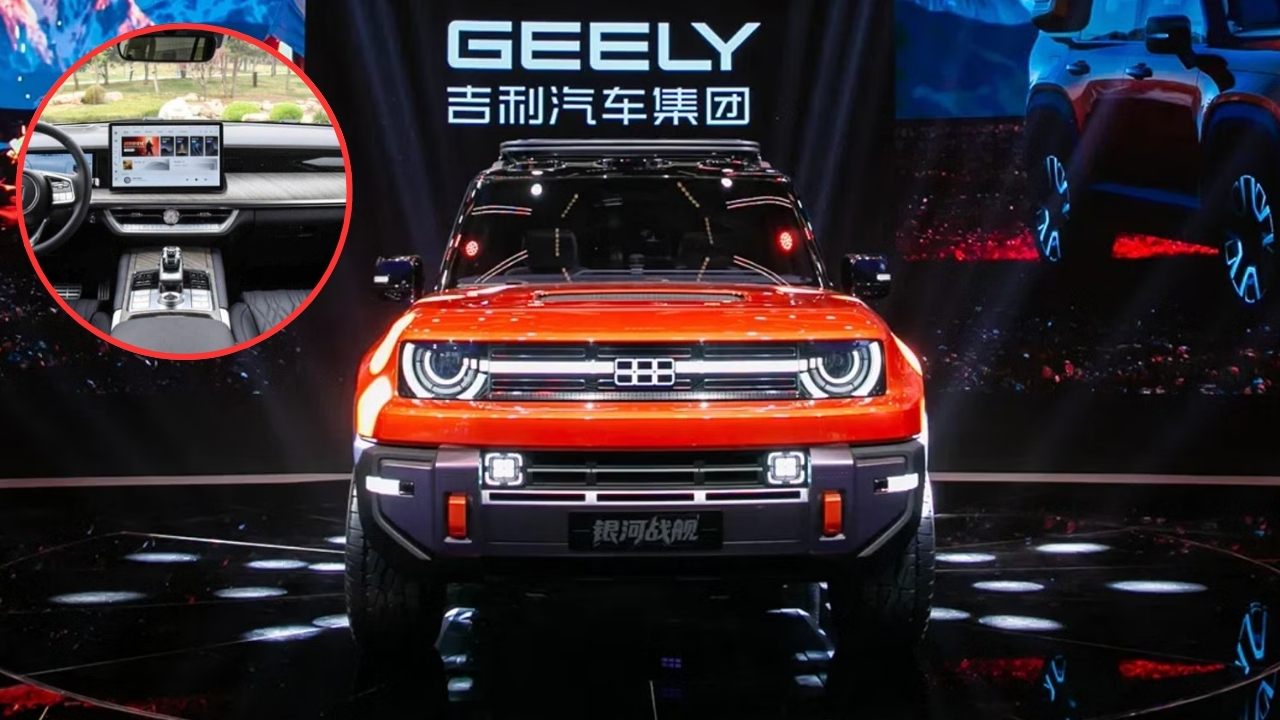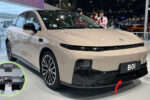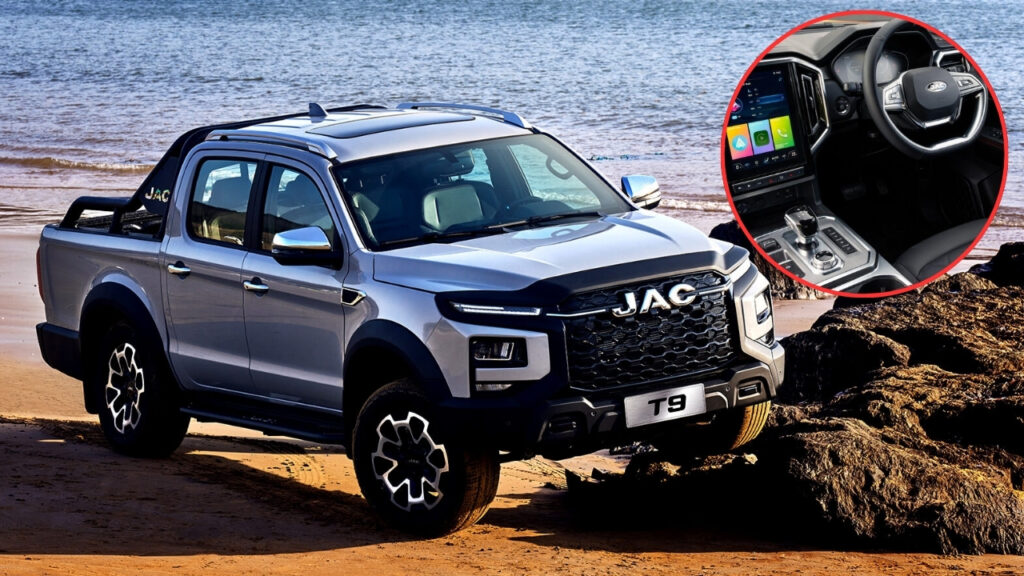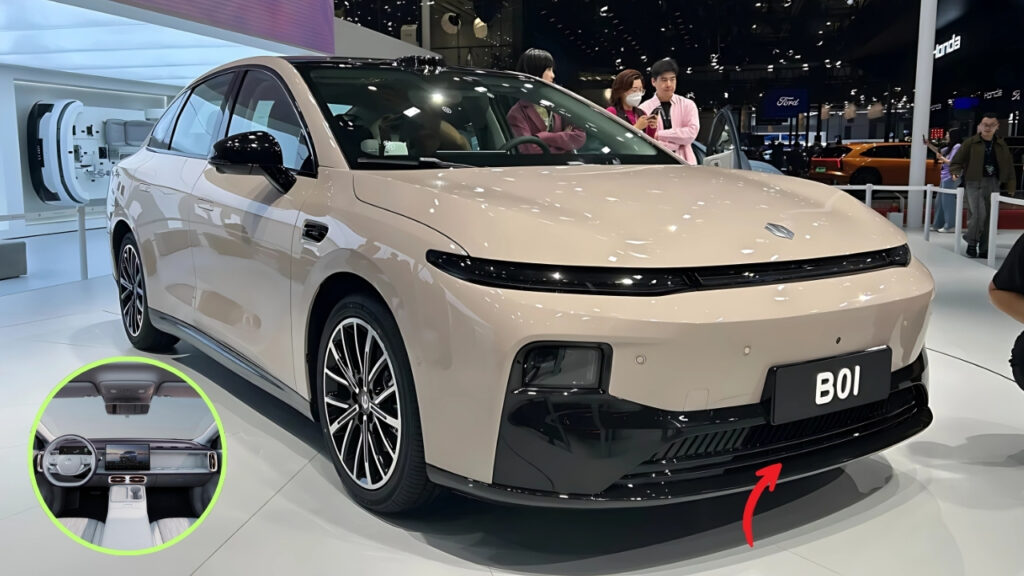Geely to challenge market leaders with advanced plug-in hybrid SUV Chinese car maker that tweaked its hybrid technology The Geely Cosmos is designed to challenge perceptions of Chinese automotive design.
The front of the vehicle features an eye-catching illuminated grille whose pattern changes depending on the driving mode, and the profile is dominated by large wheel arches that house 21-inch aerodynamic alloy wheels. A sloping roofline terminates in a spoiler; Geely claims this generates significant downforce at highway speeds–very rare for a family-oriented SUV.
Inside, the Cosmos offers a thoroughly up-to-date cabin interior with a sweeping 15.6-inch central touchscreen and 12.3-inch digital instrument cluster.
The interior material quality shows a significant step up from previous Geely models; actual leather, brushed aluminum and open-pore wood create a luxury ambiance that rivals the major prestige makers.
Table of Contents
A Sophisticated Hybrid Powertrain

The Cosmos’s technical specs said much about Geely’s investment in plug-in hybrid technology. And so fits for this vehicle a 1.5-liter turbocharged, four-cylinder engine along with ‘real’ all-wheel-drive capability — two electric motors, one at each axle.
The internal combustion engine alone kicks out 177 horsepower, which combines with a total system output of an amazing 349 hp and 442 lb-ft torque.
This arrangement of machinery lets the Cosmos go from 0 to 62 mph in about 5.8 seconds, placing it at the fastest end of what else is on offer now.
Most importantly for most buyers, its hybrid system gives splendid efficiency, and with an optimistic NEDC cycle figure Geely claim a combined fuel consumption of just 157 mpg (1.5L/100km).
A 19.7 kWh lithium ion battery pack gives the Cosmos a pure electric range of up to 62 miles, good enough for most commutes without firing up the gasoline engine.
How quickly will that mileage drop? The battery can be recharged from 10% to 80% in around 30 minutes using a 50 kW DC fast charger, or about 3.5 hours at home with a standard 7 kW charger.
A Direct Challenge to Established Players
Geely’s ambitious aims for the Cosmos mean it goes head-to-head with that other vehicle on the block. Models in direct competition with its hybrid SUV include the Toyota RAV4 Prime, which in many markets is seen as the incumbent leader of this particular category.
With similar electric range but less power than the Cosmos, RAV4 Prime has a track record for reliability that Geely will have to match.minitest
Geely, however, also unveiled their third model release of 2022: the Cosmos. A new take on compact hybrid vehicles, it is priced similarly with Great Wall’s own upcoming car and offers nearly equal performance—the only hitch being that both PR chooser and the judges seem to prefer Haval brands from Haval.
“Our competitors are the best at this game,” Li cursed himself. “We know that they can do things we cannot even begin to imagine. But to make society see the value in using biomass-based fuel sources as it should, while still safeguarding labor rights, that’s what Geely has brought to bear on Cosmos.”
Whoever said history does not often place the crown upon best man’s head is now proved quite wrong. Good product comes from all over he world. It’s just like some other places in the world to think of.It seems from these reports that Geely has gleaned the best from its rivals.
It has copied Japan’s strong after-sales service reputation, giving an 8-year/160,000-kilometer warranty on the battery system; it bests Great Wall Model in features offered as standard; and it stands up to BYD with like specifications at a lower price.
Complete Set of Advanced Driver Assistance and Connectivity FeaturesThe hybrid powertrain is only the corner piece of a complete technology package.
Cosmos boasts Geely’s most advanced driver assistance system yet, stretching all the way to a self-driving Level 2+ suite incorporating highway assist functions, adaptive cruise control with stop-and-go capability toatt encourage smoother traffic flow at busy times of the day throughout entire cities, lane-keeping assist, blind-spot monitoring, and an automatic parking system.
The car is equally flexible in its connectivity arrangements, boasting a comparable array of features to any vehicle from Geely so far: The Cosmos comes with the latest iteration of company’s GKUI infotainment software, which can be operated through wireless Apple CarPlay and Android Auto connections.
It can receive over-the-air updates; is remote monitoring/operation compatible on smartphones via a user app that incorporates an artificial intelligence (AI) companion to fine touch settings in keeping with one driver’s preference after another through time.
For example:Today’s savvy consumer expects vehicles to be in conformity with their personal information online Alberto 3 like Geely will can run faster RICH EVENT and so on a
“They’re not only up to standard but exceed it so with features that are intuitive and purposive rather than just flashy gimmicks,” explained Geely’s Chief Technology Officer Lin Jianwei.
Innovations in Manufacturing and Supply Chain
Geely has made significant optimizations to its production processes in order to bring the Cosmos up to global quality standards.
The cutting-edge Hangzhou production line uses more than 300 robots to perform 70% of assembly tasks, allowing human beings to concentrate on quality control and the final touches.
Furthermore, collaborating with China’s biggest battery manufacturer, CATL, means that the company has secured a dedicated battery manufacturing capacity–goods arrangement has offset a concern that other uniformity sedan car manufacturers meet in building power-battery components.
“Supply chain stability is a key consideration in today’s motor industry,” commented Rebecca Chen, an industry analyst at Global Auto Intelligence. “Geely’s strategic partnerships give it an advantage over some competitors who are really suffering from battery supply problems.”
Global Objectives, Region-dependent Customization
Although Geely’s initial release is aimed at the domestic Chinese market, the company has indicated plans to take the Cosmos to European markets by Q3 of this year, and is presently considering expansion into North America pending clearance from regulatory authorities.
The company has worked to tailor the package of features available and purchase price strategy in line with regional consumer demand.
European models will be equipped with additional active safety protections to achieve a EURO NCAP five-star rating, while in the domestic Chinese market the emphasis is on functions facilitating connection and accessibility.
“When it comes to consumer preferences, we know that there are large differences between different markets,” said Thomas Williams, Geely’s International Markets Director. “What goes great in Shanghai may not get any response whatever in Stockholm or San Francisco.
Our regional teams are given input on each part of the Cosmos’s development process so this car best fits the needs specific to each area.”
Pricing Strategy and Market Positioning
The base model of its domestic Chinese market is priced at roughly $27,900, with fully-equipped flagship variants selling for $35,700.
It is this pricing that positions it approximately 12% below similarly-equipped competitors, reflecting the Geely philosophy “one step back, two steps forward, better value for customers than everyone else.”
In European markets, prices are expected to start at €38,000. With a standard list of equipment generous by Chinese standards but comprehensive in Europe, the company hopes to draw attention to what it is offering compared its competitors who usually require expensive option packages to get the same features.
125,000 units are the company’s opening-year sales target globally, of which the Chinese domestic market will absorb around 70 percent by volume. If fulfilled, this would mean a rather major shake-up to the existing market order.
Environmental Credentials Beyond the Powertrain
Shell says it places as much emphasis on sustainability beyond the vehicle’s electrified powertrain as it does on the impact it makes to your driving pleasure.
For Cosmos models with standard PHEVs, interior materials include recycled plastics, bio-based leathers, and wood trim from sustainably-sourced timber; meanwhile the A-pillars are constructed out of a bioplastic made of sugar cane fibers.
And the manufacturing facility? That stands currently at around 35 percent renewable energy for its power needs; with plans in place to increase this figure over 50% by next year.
“Environmental responsibility should extend through the life of the vehicle,” explained Geely’s Dir. of Sustainability Li Mei. “From manufacturing and through ownership, including recycling, we have considered environmental impact during every stage.”
A Watershed Moment for Chinese Automotive Ambitions
More than just another plug-in hybrid on an increasingly crowded market, the Geely Cosmos symbolizes the growing confidence and capabilities of Chinese automakers to compete directly with established global brands not just on price but also design, technology and quality.
As to whether the Cosmos will manage to eat into market share held by Toyota, GWM and BYD, though this is uncertain for now (and may remain so), its package of services with rock-bottom pricing looks very much as if Geely was born and bred for commercial success at energized vehicle level even more than its other ventures.
But for consumers, the coming of this more and ever fiercer rivalry will mean not only a quicker pace in innovation but also stable (or perhaps even falling?) prices–with both kinds It’s still a winner as long we’re still in the middle phase of the conversion for automobile makers.





